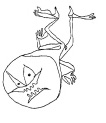Your design document (called DESIGN) should describe the design of your assignment. This includes descriptions of the data structures you're going to use, the algorithms, and a description of each function including its purpose, inputs, outputs, and assumptions it makes about the inputs or outputs. The file should be in the project directory with the code
|
|
sbrandt@cse.ucsc.edu |

|